The US Navy’s largest destroyer ever heads out to sea
42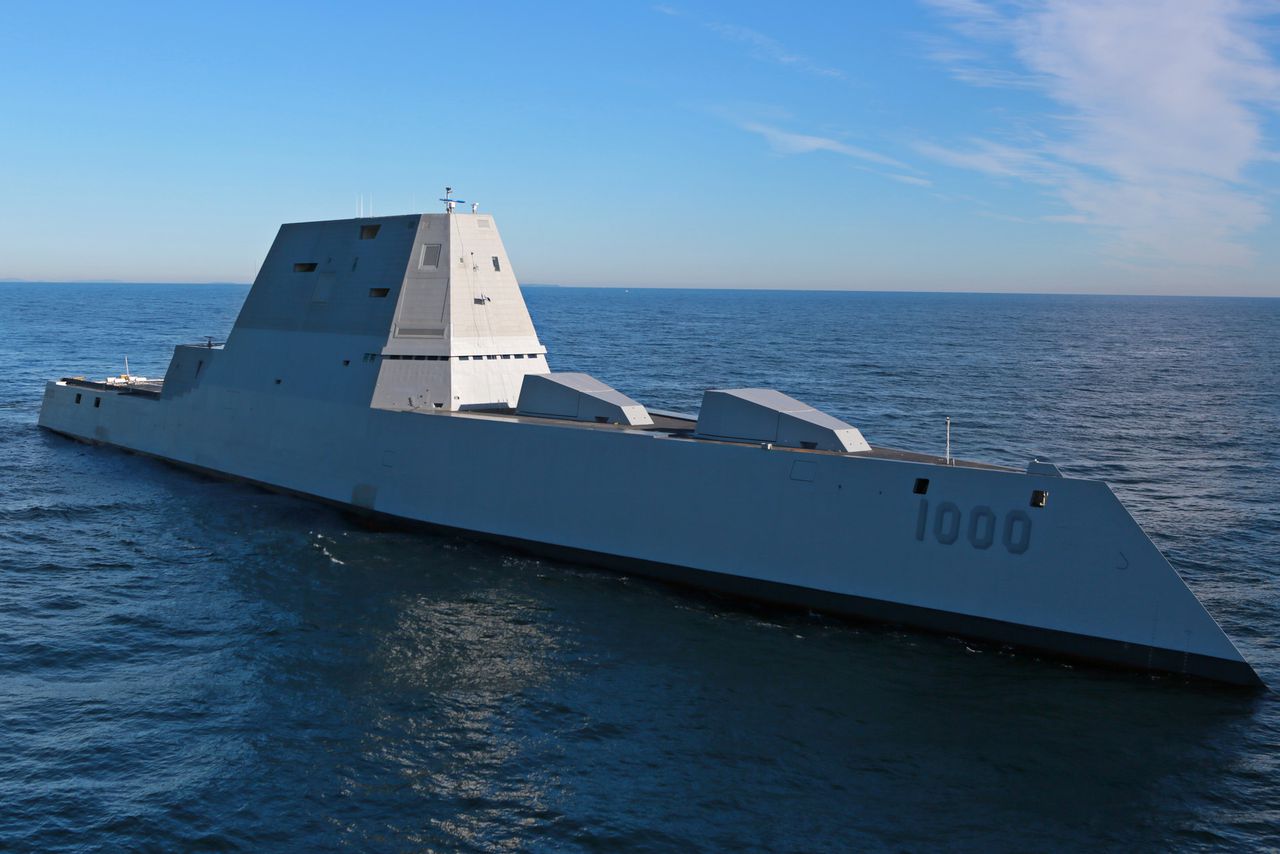
America's largest and most futuristic destroyer has headed out to sea for the first time ever. The USS Zumwalt departed from the Bath Iron Works shipyard earlier this week for its first open ocean trials, eight years after construction on the vessel began. With its inward-sloping sides and sharp angles, the Zumwalt — the first of three ships in its class — is thought by some to represent the future of the Navy. It's fitting, then, that it's helmed by one Captain James Kirk. "We are absolutely fired up to see Zumwalt get underway," Kirk told the Associated Press. "For the crew and all those involved in designing, building, and readying this fantastic ship, this is a huge milestone."
The Zumwalt-class is designed to operate in both the ocean and shallow waters, with its backers claiming it can fulfill a number of roles, including protecting larger ships and firing on inland targets. It's also heavily automated by Navy standards, with a projected crew of just 158 — almost half the complement onboard the Navy's current Arleigh Burke-class destroyers. The Zumwalt-class also generates enough power to incorporate any future railgun or laser weapons the Navy develops, although the construction of the ship has been hit by increasing costs over the years. Thirty-two ships were originally planned for, with this figure dropping to 24, then seven, and then three — each costing just under $4 billion (excluding research and development costs).
These first open ocean trials will be important for testing the Zumwalt's design — including its stability. The ship uses "tumblehome" architecture, with its sides narrowing as they rise above the water. This used to be common in wooden warships and early ironclads in the 19th century, making ships more difficult to board and giving them hardier armor (projectiles hitting a sloping surface rather than an upright one have a greater chance of deflection and have to penetrate more material). The design was phased out in the early-20th century due to stability problems. However, the Navy says the Zumwalt's slanted sides and angled, wave-piercing bow have stealth benefits, while new computer systems will eliminate any instability problems. Ocean trials like those begun this week will find out for sure.
All images credited to the Portland Press Herald / Contributor / US Navy

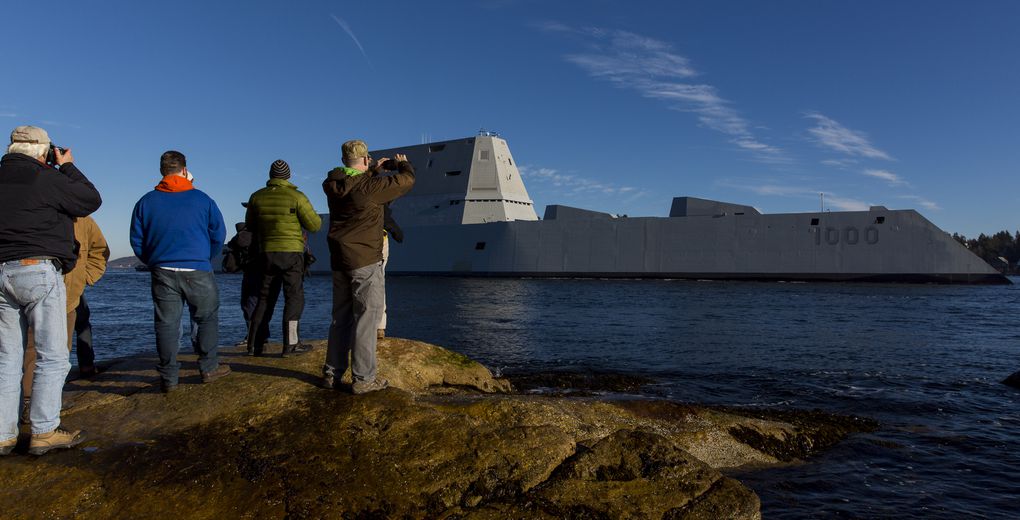
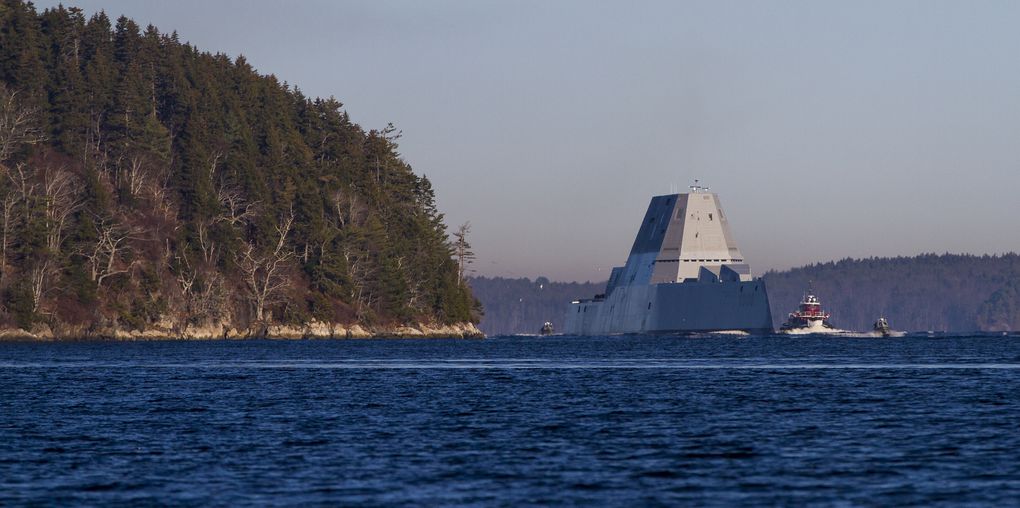
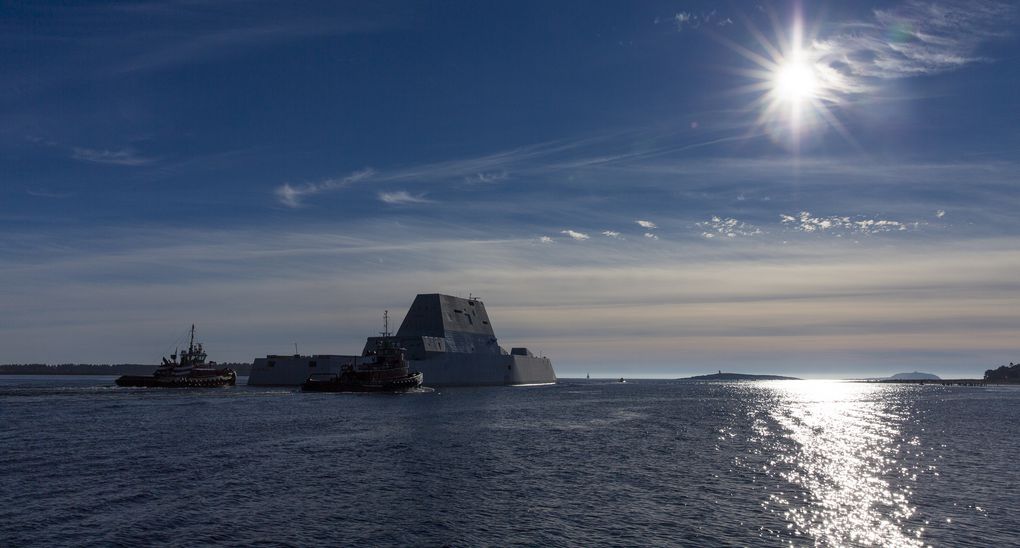

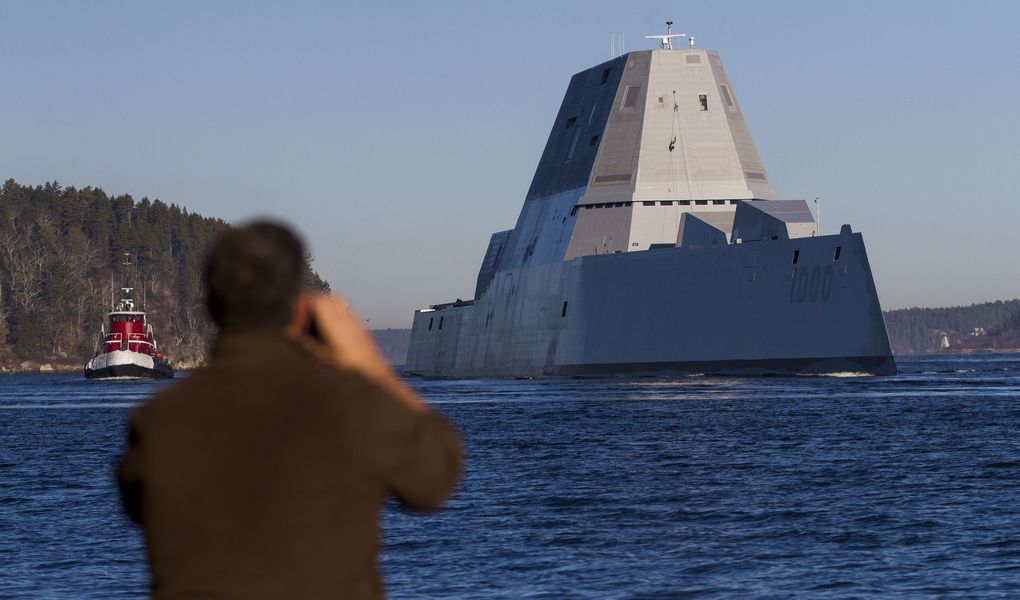
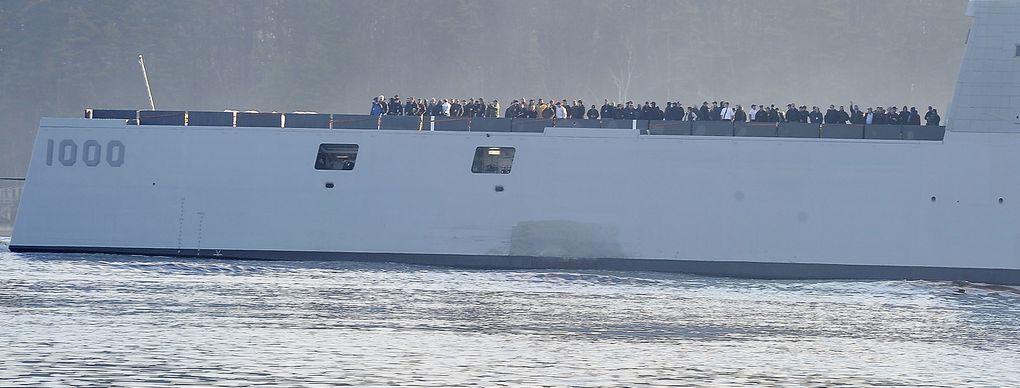
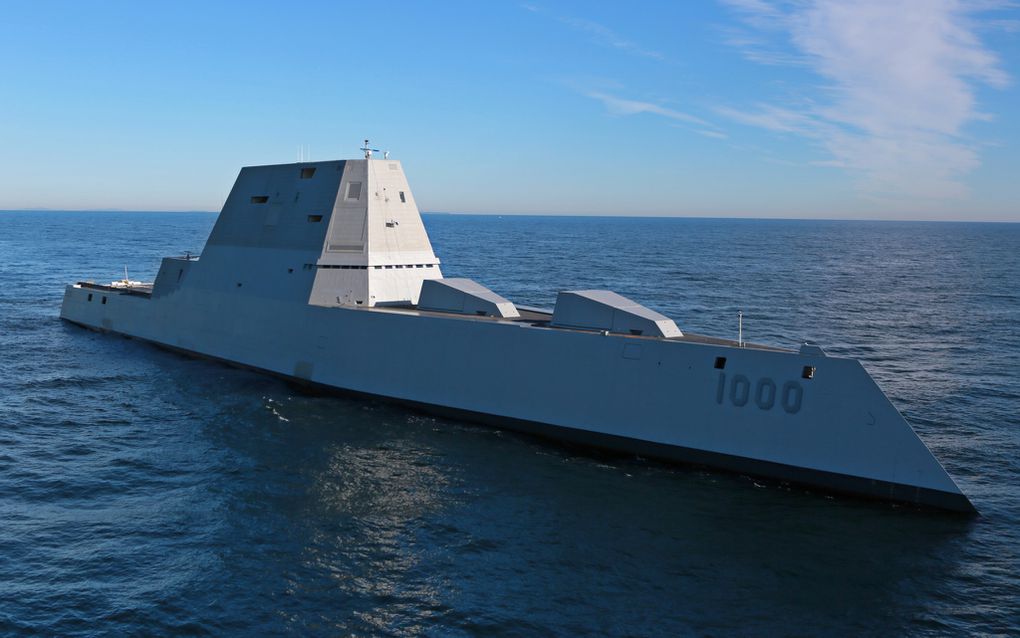
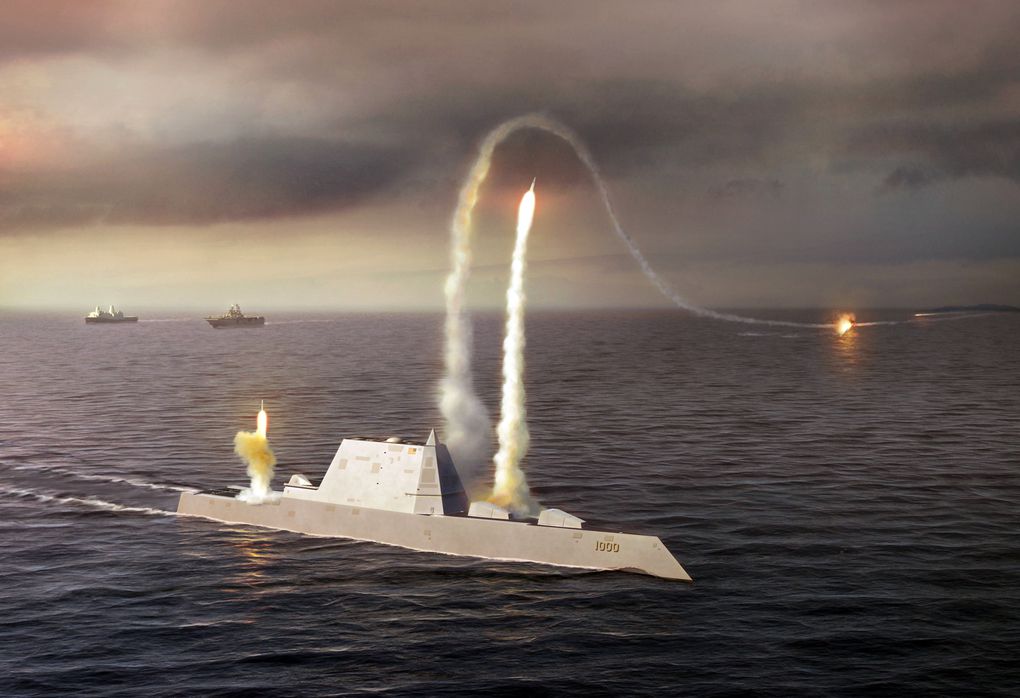
No comments:
Post a Comment
Thanks for commenting. Your comments are needed for helping to improve the discussion.